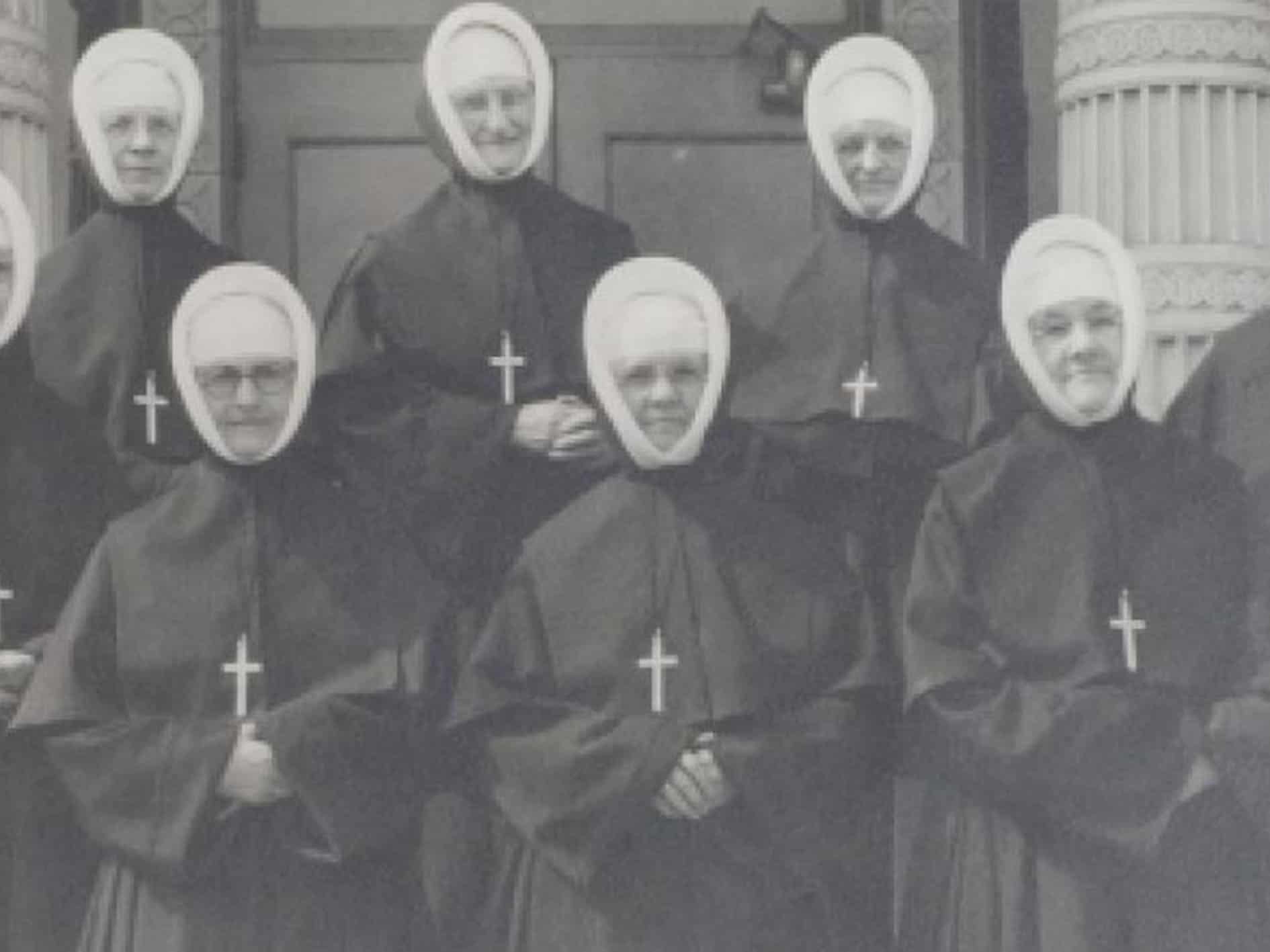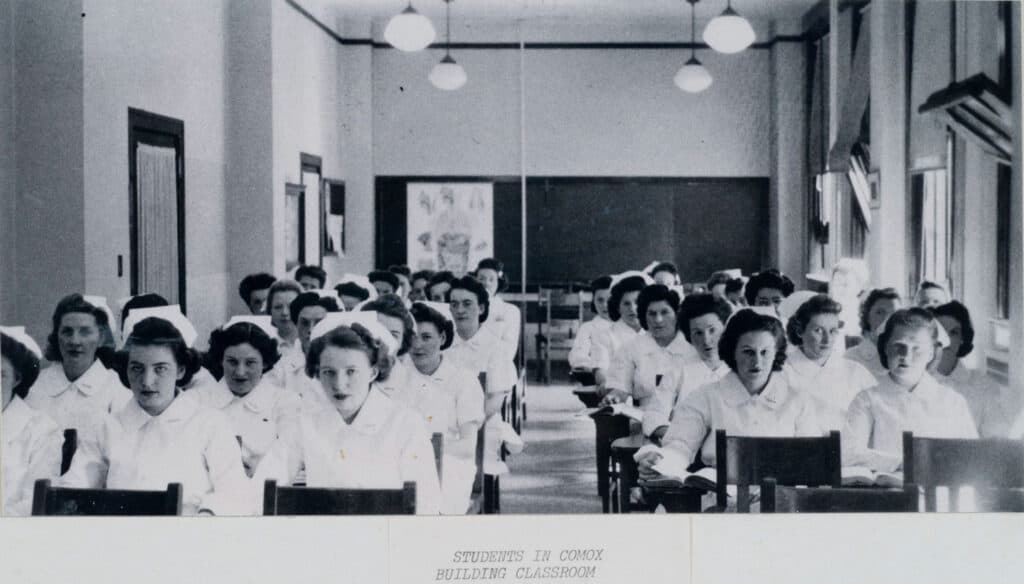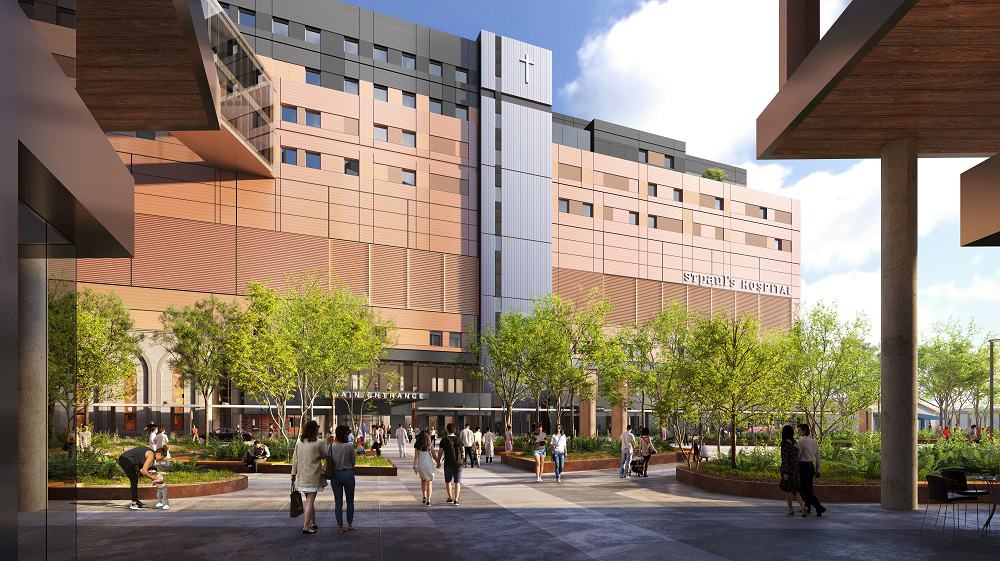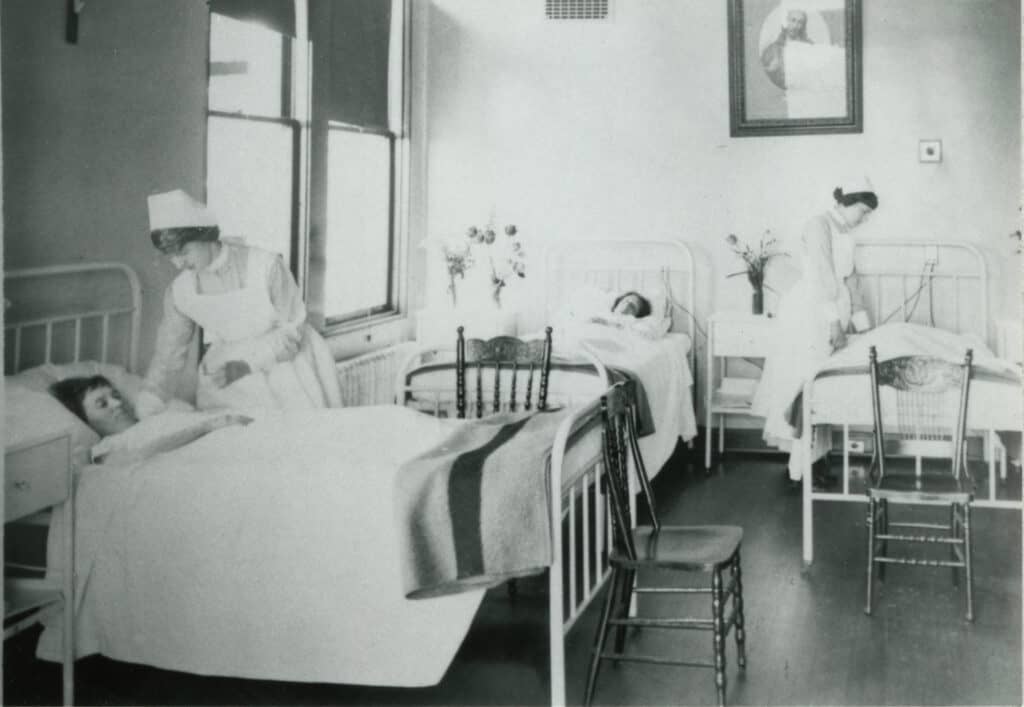Published Promise 2019
The journey to the future starts in the past…
In 1894, five nuns from the Sisters of Providence in Montreal stepped off the train in Vancouver with nothing but what they could carry and a courageous mandate to treat the sickest and most vulnerable residents. They were guided by a simple truth: If not us, who? If not now, when?
It’s almost impossible to imagine the harsh conditions and the desperate need for care that met the Sisters upon their arrival. The city was still rebuilding after a devastating fire eight years earlier. The population had boomed to 14,000 from less than 1,000 at the time of the fire. The streets were teeming with prospectors, Chinese labourers, and new arrivals. Crowding, inadequate plumbing, and a lack of sanitation sparked epidemics of smallpox and typhoid. Undeterred, Sisters from other orders soon came to BC with similar missions.
From these roots – because of these roots – the Sisters established a culture of compassion, tenacity, and innovation that continues across Providence Health Care (PHC) to this day.
In the beginning
The Sisters begin planning for the future almost as soon as they step off the train. Knowing they need to start by building a proper hospital, they pay $9,000 for the land on Burrard Street where St. Paul’s currently sits. It proves to be a shrewd decision as the city expands, but at the time the plot is a near-wilderness: charred by fire, only partially cleared, and far from the city centre. Mother Joseph, an accomplished architect and carpenter, designs the new building. Construction starts in May and the first patient is seen in November that same year!

Their accomplishment is even more inspiring when you consider the other hurdles this small group of French speaking nuns would have to overcome: social mores, language barriers, financial constraints. None of that stopped them. The new hospital opens on November 21, 1894. It’s a hub of activity and innovation from the get-go.
With a policy to treat everyone who needs care, it’s quickly apparent that there aren’t enough qualified nurses. Taking charge of the situation, the Sisters open St. Paul’s School of Nursing in 1907. As the community evolves, so does the curriculum. In 1937, the program is updated with eight weeks of instruction devoted to mental health. In 1951, James Bullen graduates as BC’s first male nurse. He joins the ranks of the more than 4,000 nurses trained in the school’s 67-year history.
In 1918, nursing Sister Charles Spinola is concerned because the cold ether used for anaesthesia often causes patients to go into shock. She invents a machine to warm the gas before it is administered. It doesn’t just make patients at St. Paul’s more comfortable, it changes the practice of anaesthesia. The machine is patented, sold, and used in hospitals for years. Sister Spinola’s initiative and ingenuity will echo for the next 100 years, empowering future generations of caregivers to bring that same intrepid spirit to their work.
St. Paul’s purchases the first X-ray machine in BC. Shortly after, in 1920, Dr. Charles Prowd brings radium back from Europe. St. Paul’s becomes the first hospital in BC to use it to treat cancer patients. He becomes the head of radiology, signalling the hospital’s commitment to investing in new technology and promising therapies. Dr. Prowd and two of his colleagues (including St. Paul’s own Dr. Ethlyn Trapp, BC’s first radiotherapist) go on to establish the BC Cancer Institute.
“My God, you’re a woman!”
Early on, St. Paul’s demonstrates another facet of leadership with the hiring of BC’s first female doctors: Trapp in 1938, endocrinologist Dr. Josephine Mallek in 1946, and cardiologist Dr. Doris Kavanagh-Gray in 1959. Upon seeing her for the first time, Kavanagh-Gray remembers some patients exclaiming, “My god, you’re a woman!” But with her skilled care, skepticism quickly turns to respect. Just seven years later, Kavanagh-Gray becomes the hospital’s first Division Head of Cardiology. Her work lays the foundation for St. Paul’s to be named the provincial Heart Centre in 1994.
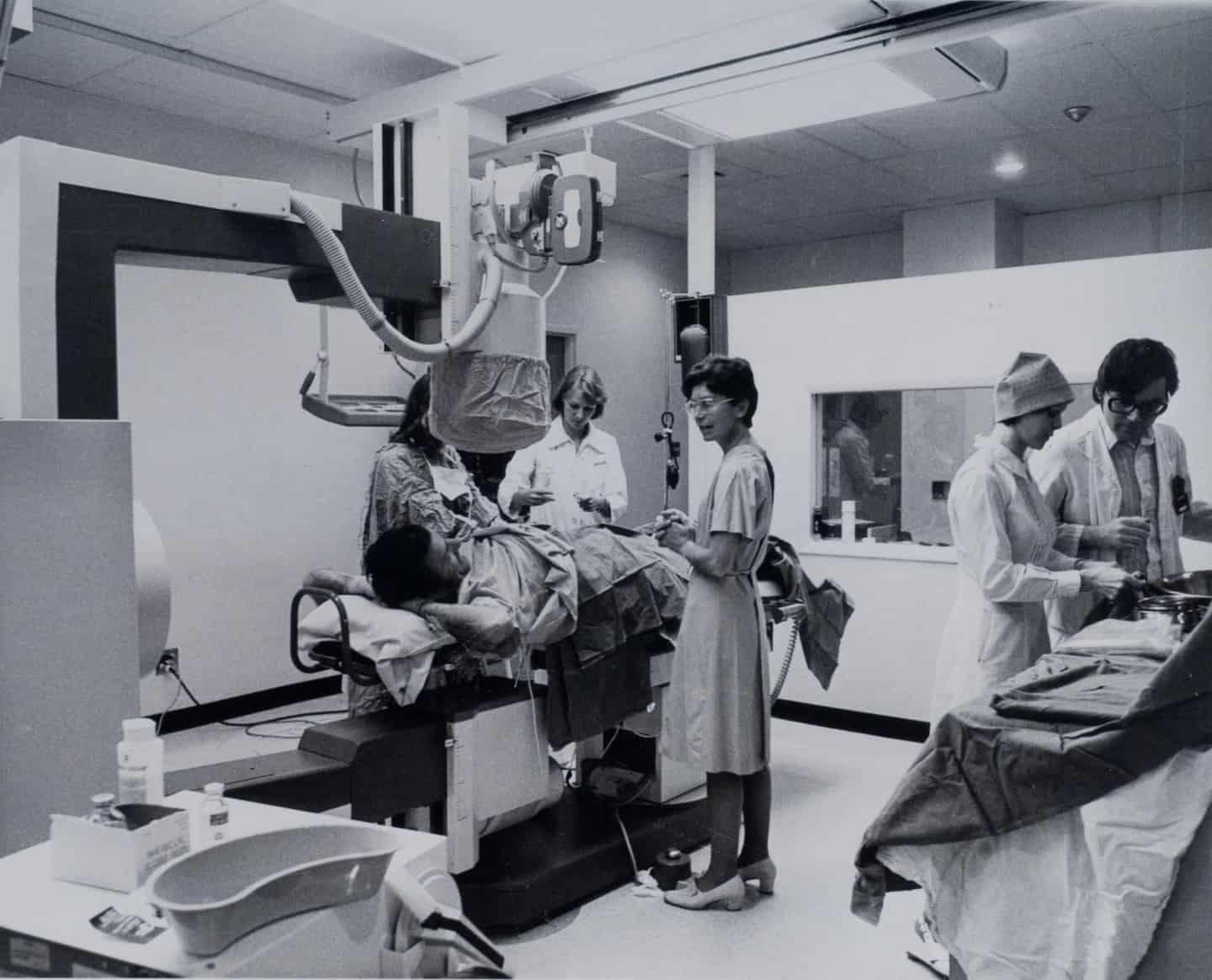
Throughout the 1950s and ’60s, breakthroughs big and small transform care across the hospital. Dr. Harold Rice hand-builds a heart-lung machine that paves the way for open heart surgeries and countless advances in cardiology. Over in the pacemaker clinic, patients are required to come to the hospital for follow-up visits every three months. The team knows how frustrating and time-consuming this is, especially for their many patients who live outside the city. In collaboration with the device manufacturer, they develop a way to assess the pacemakers over the phone with an instrument that converts the devices’ clicks into an EKG-like tracing.
With the arrival of Dr. Russell Palmer in 1962, St. Paul’s begins its long tenure as a centre for kidney innovation. Palmer tackles peritoneal dialysis: a life-saving procedure, but one rarely performed because it’s so risky. His work is scorned by some. He perseveres and develops a Teflon and silicone catheter that solves the problem of repeatedly puncturing the peritoneum (lining of the belly). It’s the start of a new era of hope for people with chronic kidney disease.
Compassion, hope, & miracles: All in a day’s work
It’s impossible to highlight every innovation, every trailblazer, every person who has made a difference, but their spirits live on. If you stroll through any one of PHC’s hospitals or residences today, you can feel it.
If you’re one of the five million Canadians with asthma or Chronic Obstructive Pulmonary Disease (COPD), you may be surprised to learn that St. Paul’s is ranked first in Canada and third in the world for our expertise in these areas. That’s thanks to the groundbreaking research being done by scientists at the Centre for Heart Lung Innovation (HLI) – research built on the original work of Dr. James Hogg, a St. Paul’s physician, globally esteemed scientist, and tireless mentor.
When he was inducted into the Canadian Medical Hall of Fame in 2010, the citation read in part, “Dr. James Hogg has arguably had a greater influence on our knowledge of COPD and asthma than any individual worldwide.” Thanks to the Centre’s distinguished team of researchers (including Dr. Don Sin and Dr. Tillie-Louise Hackett, who have both received international acclaim for their recent breakthroughs), our discoveries are driving exciting new drugs and therapies with the potential to halt or even reverse lung disease.
Speaking of progress, 40 years ago, St. Paul’s opened the very first stand-alone Adult Cystic Fibrosis Clinic in North America. For context, at that time (1979) many children with cystic fibrosis (CF) didn’t live past their 10th birthday. Those who reached their teens had challenging lives compromised by infection, difficulty breathing, and limited activities. Walk by the clinic today, and you’ll see some patients in their 70s! While there’s still no cure for CF, there is real hope. One promising study is looking into the unique biomarkers that make a particular drug effective against one person’s CF but not another’s. PHC is tantalizingly close to precision wellness strategies tailored to each CF patient that will further improve both their quality and quantity of life.
On that note, we can’t talk about hope without talking about 10C, the hospital’s former AIDS ward. Today, it’s the Urban Health Unit: a place for patients living with HIV (sometimes in tandem with addiction or mental health issues) to receive treatment for infection or acute illness. In the 1990s, it’s where they came to die. We’ve come so far since those dark days. It’s hard to grasp the magnitude of St. Paul’s leadership and the profound influence of Dr. Julio Montaner during that time of widespread fear. Suffice to say, as a result of the revolutionary drug cocktail he developed at St. Paul’s, people with HIV/AIDS stopped dying and 10C closed in 2014. (Read “125 Years of Discovery” for more about the doctor who turned AIDS from a death sentence into a manageable condition.)
Of course, hope and compassion thrive right across PHC. At St. Paul’s, you’ll discover BC’s only adult heart transplant program. To date, we have performed more than 500 of these incredible operations. Likewise, our renal team will be happy to tell you that we’re the country’s busiest kidney transplant service. Last year, 193 patients received new kidneys – a Canadian record. Over at Mount Saint Joseph Hospital, we perform 90 percent of all provincial corneal transplants and more than 5,000 cataract surgeries each year, the most of any hospital in BC.
Near the entrance to the Teck Emergency Centre at St. Paul’s, there’s a quiet alcove with a small, frosted-glass door. It’s Canada’s first Angel’s Cradle: a safe, anonymous place for a mother in crisis to leave her newborn. When it opened in 2010, the Cradle faced sharp criticism. But we pressed forward to do what was right, to do what was compassionate. Two babies have been left in the Cradle and been given the chance for healthy, happy lives.
In response to the opioid crisis, Dr. Evan Wood opened the BC Centre on Substance Use (BCCSU) in 2017. In its first two years, it has become an international authority in addiction medicine. The BCCSU is researching and implementing evidence-based approaches to treating substance use. The goal is to view addiction the way we view recovery from other chronic diseases: as a long-term process that includes regular treatment and a team of cross-disciplinary specialists. To achieve this, we’ve developed the largest addiction medicine training program in North America. Along with training caregivers in this specialized field, we have our boots on the ground with judgement-free, evidence-based care at the HUB sites, including the Rapid Access Addiction Clinic and the Vancouver Police Foundation Transitional Care Centre, as well as the Crosstown Clinic (North America’s only prescription heroin treatment centre).
Transforming care for everyone, across BC
In any conversation about compassion at PHC, we must make a special mention of Residential Care for Me, a PHC-wide initiative to make life more meaningful for the seniors who live in our residences. This sweeping transformation will help residents experience genuine engagement in places that look and feel like home – places where people will enjoy privacy, dignity, and independence.
To further our deep commitment to BC seniors, PHC initiated Providence Residential & Community Care (PRCC). PRCC will open Canada’s first publicly funded dementia village in Comox with a second one slated to follow in Vancouver. With the number of Canadians living with dementia projected to double in the next 15 years, these initiatives will resonate province-wide for years to come.
Indeed, PHC’s mission to help the sick and vulnerable wherever they are has always stretched beyond the confines of our buildings.
- Renal patients from across BC and Yukon manage their hemodialysis at home, thanks to the equipment and instruction they receive at St. Paul’s.
- PHC researchers are investigating the causes and most effective treatments for the debilitating lung diseases so widespread in remote First Nations communities of northern BC.
- Family doctors province-wide call PHC’s Rapid Access to Consultative Expertise (RACE) hotline to confer with 38 specialists in areas such as eating disorders, psychiatry, refugee health, and sleep disorders. In 10 years, the RACE line has taken 35,000 calls and saved 60 percent of its patients from needing face-to-face appointments.
We’ve truly come full circle from the 25-bed hospital at the muddy end of Burrard Street. Now, as we prepare to build the new St. Paul’s, we are even more inspired by the Sisters’ fierce determination. And we are even more grateful for the deep roots they sowed with their leadership, their vision, and their compassion. Imagine 125 years ago… If you were asked to support a new hospital being built on a patch of land on the outskirts of town. A place with a mandate to treat the sickest and most vulnerable people in the community. A hub of innovation that would have immeasurable impact on us, on our community, on people around the world. What would you do? Today, we’re asking ourselves this same question. The difference is we have the legacy and the leadership of the Sisters to guide us. And we have you. Your generous support will help transform the way we deliver and receive care today and into the future.
Help support the next 125 years of innovation at St. Paul’s. Donate now.
